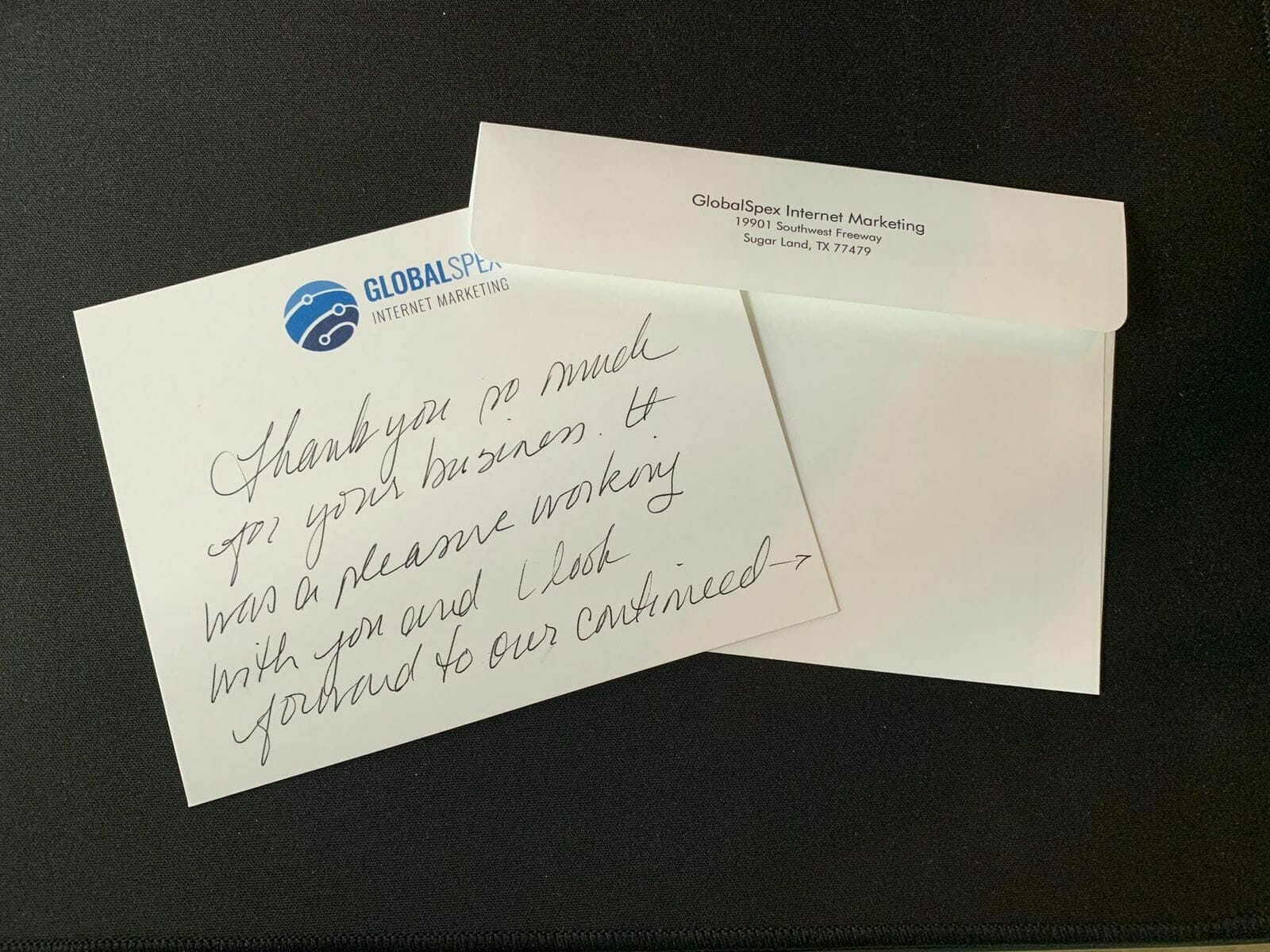Congratulations! It was an incredible journey with your most recent web design client. You helped them overcome obstacles, and you enjoyed watching them blossom and grow. The challenge of collecting content, maintaining expectations, and building a relationship these past few weeks has finally culminated in a successful delivery.
You can now rest, reflect, and move on to the next customer.
But wait! Not so fast.
Your job is not done. Not by a long shot.
You've only reached the “what comes next” stage for your customer.
You'll leave them with a bad taste if you drop them quickly and move on to the next project without a beat.
Put yourself in their shoes.
Imagine you've just bought a beautiful new car. Your salesman has walked you through the arduous process of finding a vehicle that fits your needs and budget. They've worked with the bank, helped you fill out the paperwork, and handed you the keys.
Then he walks away and immediately runs to the next customer. You've just spent a few hours with this person, and as soon as you signed on the dotted line, he was out of there.
How would you feel?
Pretty upset and alone, I assume.
You've just bought a car and have no idea how to use all of the fancy new buttons, how to request maintenance for the next oil change, or where the lug nuts are for when the car has a flat.
That's how your customer feels if you don't have a proper offboarding process.
Being a website consultant means having systems in place that help you build your reputation as someone with processes and communication skills. That doesn’t only mean selling and delivering.
Just as you have an onboarding system for your web design agency customers, you should design and utilize a customer offboarding system.
What is Offboarding?
Offboarding is the critical point of transition between delivering a product or service and continuing the customer service they have come to expect.
Fundamentally, offboarding extends your value to your client past the point of sale or completion of their project and ensures a smooth transition and continued client experience.
First impressions are crucial, but last impressions will stick around forever. No matter how well you performed and delivered your service, not properly offboarding can make or break your relationship with your customer.

Why Do We Offboard?
Beyond just keeping in touch and maintaining the relationship, there are several reasons that offboarding is necessary.
1. Continuing the Customer Experience
To leave your customers with a favorable impression of your brand, you need to have a uniform and repeatable offboarding process, which we'll discuss later. Keeping that relationship strong and staying in touch sets you up for continued, repeatable business.
2. Relationship Changes
The obvious reason that we offboard is that the relationship is changing at this stage.
Suppose you worked with a customer to set up their marketing program or get them through a large or complicated project, and now offer support. In that case, there should be a final call to go over those last steps and provide an overview of the final deliverables as well as setting expectations for the new relationship.
This could mean new staff members or a new process that the customer will need to know about. In return, they may have a new point of contact.
3. Transitioning
Having a transition process gives your customers that good feeling that you are not dropping them off at a curb. This is your chance to show them that you will continue to support them since your customers will likely need your services again.
Transition questions might be:
- Will people within your company be changing from project manager to the support team? If so, you’ll want to introduce the new team members.
- Will your customer have a new point of contact to help manage the website? The original point of contact may no longer be the person who will be the one your support team communicates with.
- Will there be license fees to manage? How will you make sure they are maintained?
- For e-commerce, who will be updating and uploading products? Will they need to be trained?
- What accounts will you need to maintain and have access?
While you might be saying goodbye, for now, make sure you stay in touch with them and let them know that you are available to help when needed.
4. Security
You'll need to find the right balance between keeping files for a certain period versus providing all documentation back to the customer. In addition, you'll need to make sure you shore up any security and access that you have.
In some cases, you might need to remove yourself from their accounts or ask that they change passwords to protect your company later down the road. For example, you may need to terminate your administrative access from domain logins. That will be a conversation you'll need to have with your customer.
I do recommend sending a final document or website manual that holds the vital information the customer needs to manage their online marketing.
5. Future Referrals
Offboarding is an opportunity to capture additional revenue. As you've established a relationship, they've come to trust your opinion, and you've been able to learn more about their business. You can bring up additional products or services that you think will augment their marketing.
6. Building Case Studies
While the feedback and the project are fresh in your mind, you can take time to outline the problem and solutions your company helped design. Document and track their wins if this is possible. Check out this example of one of my case studies.
7. Upsells
During the offboarding process, you have the chance to upsell or find other services that would help you to continue servicing your client. Ask them if you may contact them regarding any future services or offers that may benefit them.
If they are not already a part of your customer email list, you need to do this to maintain contact.

How To Offboard
As someone who has offboarded countless customers in various states of delivery, I don't recommend ignoring this process and waiting until the last minute with one or two emails. I recommend an offboarding system that begins in the previous stages of your delivery and continues for a few weeks after delivery, customized for each customer.
1. Have A Purpose
All communication needs to be purposeful. You don't want to bother your customer with an endless stream of emails. Much like you did when you set up your anti-follow-up email campaign, you want to provide the right information they will need. For example, their new website is live, how can you help them with next steps?
2. Create Your Checklist
When setting up your offboarding system, use a checklist to ensure that all of your bases are covered, and everyone who will be involved is in the loop and know what they should be doing at each point.
In your checklist, you will finalize and define each stage and step.
Create a Parting Email that details those final steps, how to take care of outstanding invoices, and thank them.
3. Offboarding Email Campaign
You'll want to continue to keep in touch with your client even after the final call. Using your CRM or your calendar, add reminders to request follow-up appointments. You can set them to three months, six months, and then every year. Most often, we lose customers because they forget about us. Let's make sure we don't lose any opportunities and schedule in-person meetings.
4. Request Feedback
When I said earlier about starting your offboarding before completing the project, this is a perfect example. Send a review request before the product delivery. This is your opportunity to ask for customer feedback. Through this process, you can find out how they felt about your process, working with you, and any recommendations.
The review request can be in the form of a simple, short survey, or you can perform a proper exit survey during your offboarding call.
If you decide on a survey with a comment, I recommend sending this email before the end of the contract.
An exit interview should include simple questions that touch on all significant areas of improvement, including communication, the process of working together, and the final product. The more concise your survey, the more likely your client will complete it and give well thought out responses.
You can assemble a collection of testimonials and great information leading to the oh so critical case study and lessons learned.
5. Record Lessons Learned
Each project allows you the opportunity to learn something and grow. Just after delivery, meet with your team and document anything while it's still fresh in your mind. Ask yourself:
- What improvements can I make next time?
- How efficient was I?
- Do I need to adjust a process or an email template or a checklist?
6. Mail A Personal Note
A personal handwritten note is your best bet here. The alternative would be a service like SendCards, but make sure your message is unique to them and not some generic comment. Your customers will appreciate the gesture.

Next Steps
1. Offboarding Follow-Up Emails.
As you did when you sent follow-up emails during the proposal process, I recommend following-up on their closing.
Some email topics I suggest:
1. You Are Live – Congratulations!
2. Next Steps in Your Digital Marketing
3. Schedule Your Final Review
4. How to Request Support
5. Your Website Maintenance Manual
6. Request A Review
7. Request A Referral
8. WordPress training videos
9. Send tools like a social media calendar or blog post spreadsheet.
2. Documentation
Document your offboarding system. I know many of you might be freelancers or solo at the moment, but documentation is critical no matter how big or small your company is. Documenting this process helps to ensure that everything that should be done will be done.
Believe me, it’s easy to forget the smaller steps. Your checklist can be within your project management tool like Asana or Teamwork or a simple Google doc.
3. Share the Win
Sharing our mutual win is often a missed opportunity. Since it can take time to create a proper case study, you can quickly share the win on social media by congratulating your customer's new success. When doing so, praise them on their service and them as a customer. (Less about how great you did!)
Final Thoughts
Offboarding is your opportunity to stay in touch with your customers and maintain the relationship you earned through hard work. Make sure you transition your customer flawlessly and leave them wanting more and raving about you.
With offboarding, when you consider that it will cost more to attract new clients, retaining your current clients is evident to your bottom line.





